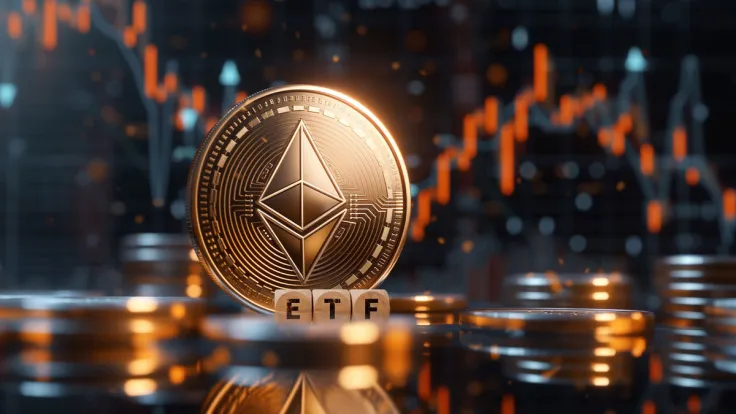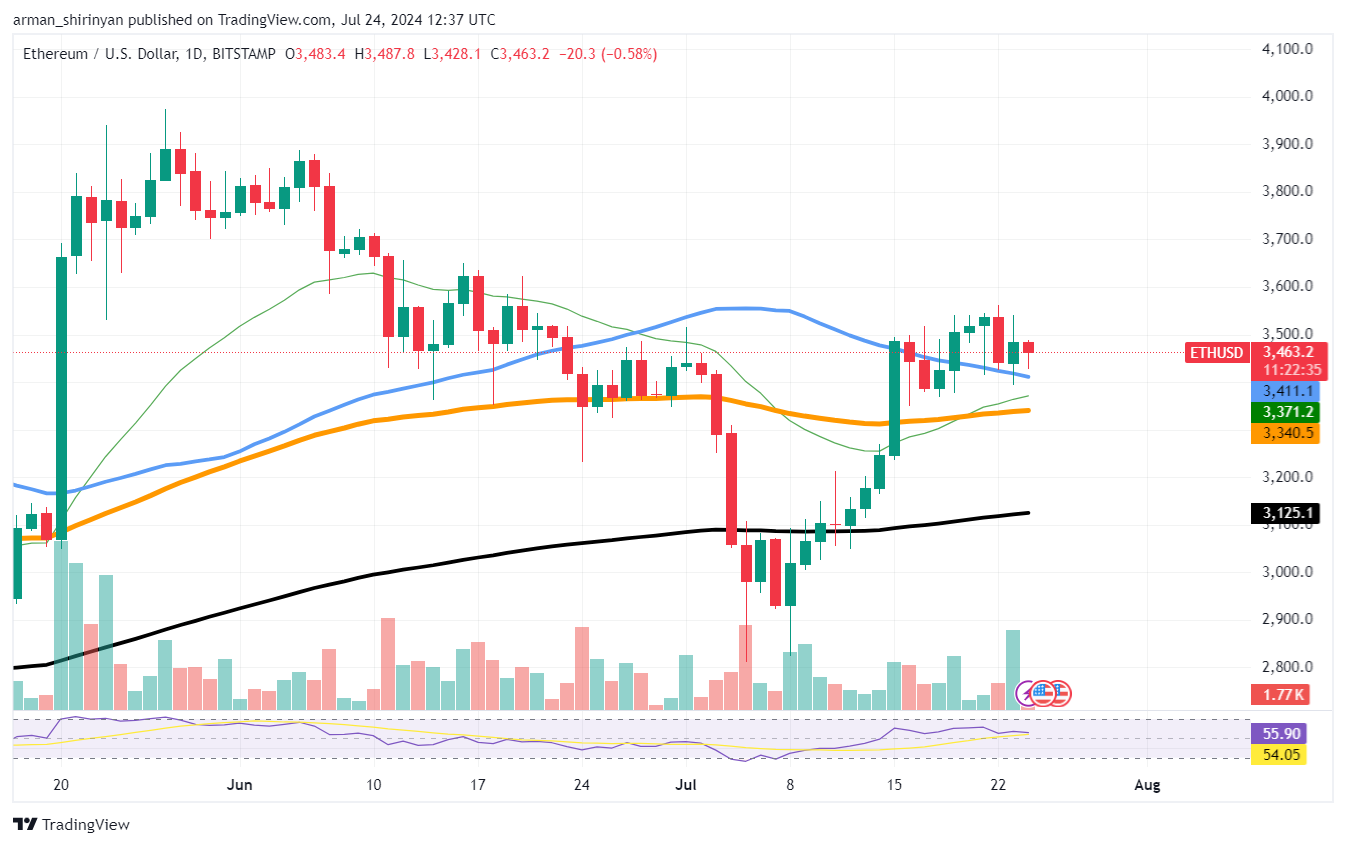
Disclaimer: The opinions expressed by our writers are their own and do not represent the views of U.Today. The financial and market information provided on U.Today is intended for informational purposes only. U.Today is not liable for any financial losses incurred while trading cryptocurrencies. Conduct your own research by contacting financial experts before making any investment decisions. We believe that all content is accurate as of the date of publication, but certain offers mentioned may no longer be available.
Ethereum's price did not rise in tandem with the excitement and $1.112 billion in trading volume that occurred in the first few days. Strong investor interest was there from the $106 million net inflow, as well as impressive numbers from ETFs like Bitwise's ETHW ($204 million) and BlackRock's ETHA ($266.5 million). But the market was also under strong selling pressure thanks to the $590 million net inflow that remained after subtracting withdrawals from Grayscale's ETHE.
This sudden change in price was caused by a number of factors. To begin with, there was a chance that a buy-the-rumor, sell-the-news situation resulted from the enormous excitement and buzz surrounding the Ethereum ETF launch.

ETH investors may have sold their holdings to profit from the ETF launch if they had amassed ETH ahead of time. Second, although the introduction of the ETF attracted attention from institutions, it also brought attention to the dearth of new retail investors joining the market.
While institutional inflows are important, the mood of the market as a whole is still muted when retail investors do not participate. A bullish trend must be maintained by a balance between institutional inflows and retail participation. Additionally, the dynamics of the larger cryptocurrency market are important.
Bitcoin suffered a similar fate before witnessing significant inflows and even recovering to almost $70,000. This might also apply to Ethereum if institutional investors sell off a sufficient amount of their holdings. We anticipate that there will be sufficient market liquidity to withstand all of that selling pressure.

 Alex Dovbnya
Alex Dovbnya Caroline Amosun
Caroline Amosun Godfrey Benjamin
Godfrey Benjamin Tomiwabold Olajide
Tomiwabold Olajide